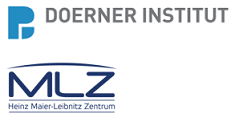Speaker
Description
Together with the microstructure, polycrystalline materials are characterized by their texture, i.e. the distribution function of the crystallographic orientations of grains in relation to the sample coordinate system. Texture records the thermo-mechanical history of the materials and can be measured using diffraction methods. Quantitative texture analysis of archaeological materials can therefore help to understand the technological processes which were applied on the objects in ancient times.
The main advantage of neutron diffraction arises from the fact that the interaction of neutrons with material is relatively weak and not related to the number of electrons, and consequently the penetration depth of neutrons is some orders of magnitude larger than that of laboratory X-ray diffraction. This is particular essential for the non-destructive texture analysis of archaeological objects as no additional treatments of the samples (e.g. polishing) are necessary.
STRESS-SPEC at FRM II is designed as a state of the art multi-purpose diffractometer for strain and texture analysis. Besides the optimized high neutron flux the available large variability in gauge volume definition systems together with the robotic sample handling option offer high flexibility for bulk or gradient texture measurements.
In this contribution we will first present the basic methods for texture/pole figure (and strain) measurement. In addition, some successful texture measurements performed at STRESS-SPEC on archaeological objects, such as gold artifacts found at the bronze age rampart of Bernstorf (Bavaria, Germany) and Indian wootz blades will be shown.

